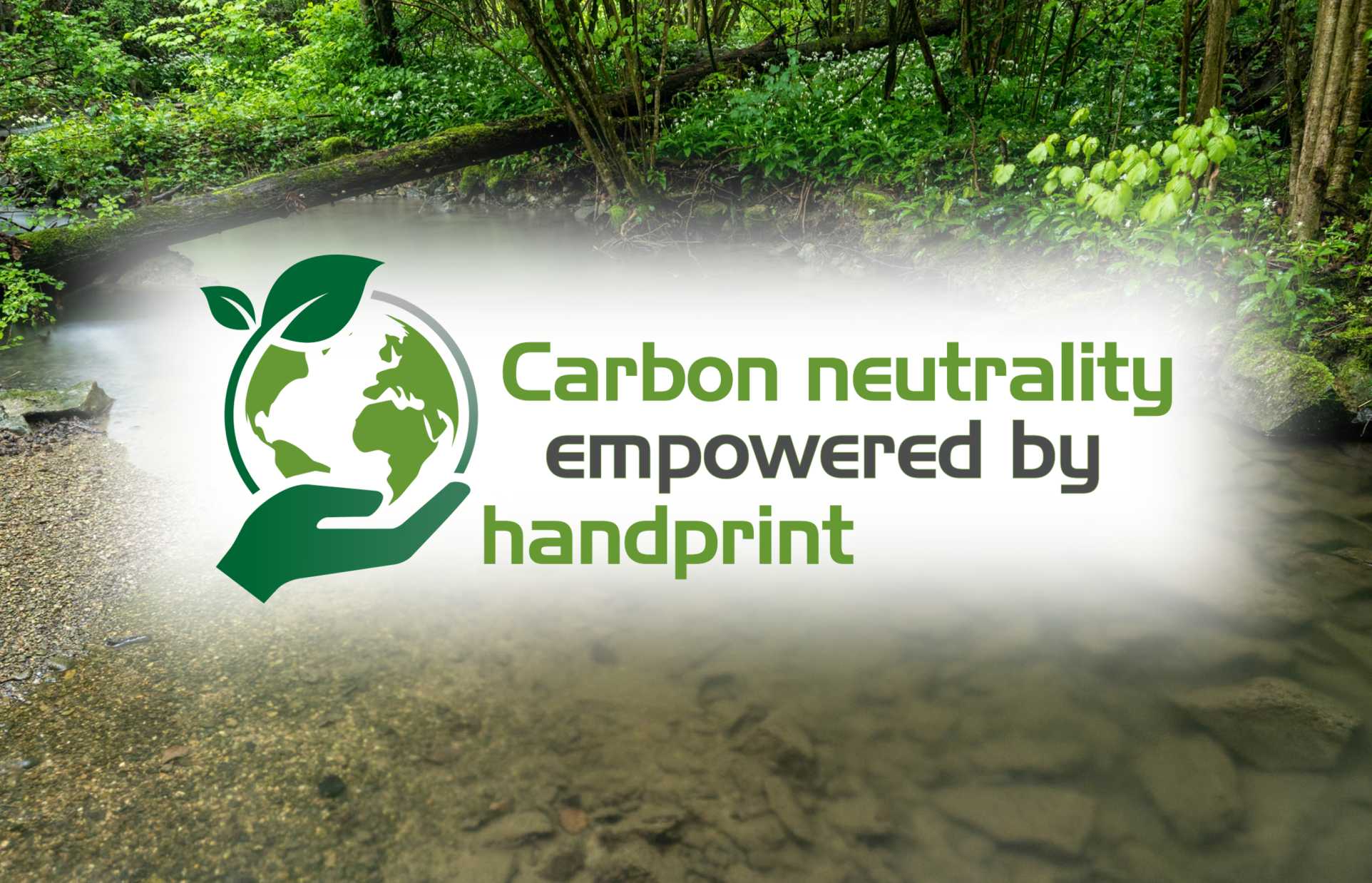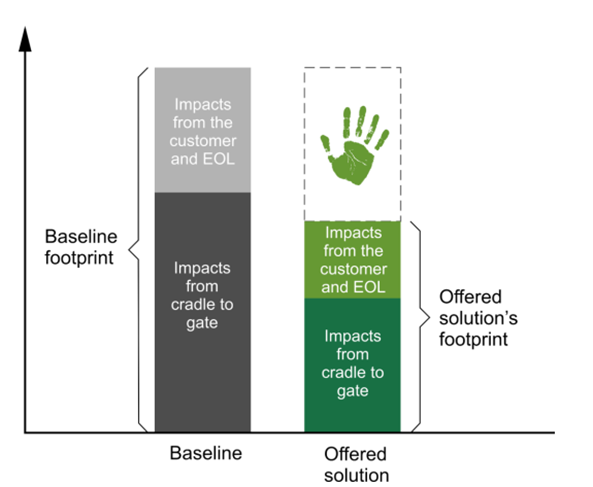
Handprint project updated the handprint framework for circular economy solutions, advancing business opportunities and competitiveness
ProjectsCarbon neutrality empowered by handprint (Handprint) project started on September 1st, 2021, and ended on February 29th, 2024. Handprint was a research project with an aim to develop the handprint framework to show the climate neutrality and the positive environmental impacts of circular solutions both reliably and credibly. Building on the foundations of two previous Handprint projects, Carbon handprint 2016-2018, and Environmental handprint 2018-2021, the recently ended Handprint project was the third Business Finland funded project in the series of Handprint research projects led by LUT University and VTT Technical Research Centre of Finland.
Joining the ExpandFibre team to discuss the third Handprint project and its key outcomes were Katri Behm, Senior Scientist (Sustainability) at VTT, and Kaisa Grönman, Associate Professor at LUT University (Sustainability Science). ExpandFibre Project Manager Matti Sonck, Development Manager, Bio2X at Fortum, also joined the discussion to provide valuable insights on the project from a company partner’s perspective.
Handprint was coordinated by VTT, originally with Saija Vatanen, Senior Scientist, for the first two years and later with Tiina Valjakka, Manager, Operations Support, for the final months of the project after Saija left VTT. Katri Behm was involved in project activities at VTT from the beginning and became the main project contact from VTT after Saija left. Kaisa Grönman acted as the project manager from LUT University’s side, coordinating the work at LUT. Joining the two research organizations for the Handprint project were notable industrial partners Borealis, Fortum, Hartwall, HyXo, Höyrytys, Konecranes, Martela, Neste and Urbaser.
Katri kicked off the discussion by providing a quick summary on the project’s final seminar event that took place as a hybrid event on Feb 14th, 2024: “The final seminar event of Handprint was a success. We had 30 people joining us onsite at VTT and approximately 100 people joining the event virtually. We had detailed presentations on the background of the project in addition to highlighting the key results of the work carried during the project. Another key aim for the final seminar event was to showcase how handprint could be used as a feasible tool in the context of carbon neutrality, and especially highlight the handprint tool’s applicability for circular economy solutions in general.”
Background to the project
To explain the concept of handprint, the project’s homepage offers the following definition: “The concept of “handprint” assesses and communicates the positive impacts of a product or organization, contrasting with the term “footprint” which refers to negative impacts”. The figure below offers a visual representation of the handprint concept.

Figure 1. The basic concept behind handprint. A handprint refers to the beneficial environmental impacts that organizations can achieve and communicate by offering products and services that reduce the footprints of others. A carbon handprint is the reduction of the carbon footprint of others. EOL = End of Life. Source: Carbon neutrality empowered by handprint project, Final Seminar materials. Feb 14th, 2024.
Katri and Kaisa continued to describe the series of three handprint projects funded by Business Finland since 2016, forming a clear continuum for the carried-out research. The Carbon handprint project (2016-2018) was the first research project co-led by LUT University and VTT focusing on the calculation and communication guideline for a carbon handprint of products. The Environmental handprint project (2018-2021) extended the handprint concept to other environmental impact categories incl. water, resources, air quality, nutrients, as well as corporate and project levels. The third and final, the Carbon neutrality empowered by the handprint project focused on developing the framework to carbon neutrality and the handprint of circular solutions.
Matti continued to elaborate on the role of Fortum Bio2X in the project: ”Fortum was one of the industrial partners in the Handprint consortium, and we were involved with a case study that focused on lignin. Lignin is one of the products in Bio2X’s biorefinery concept and provides a raw material for various applications. The case study really broadened my understanding on the concept of handprint and provided me with additional insights to discuss handprint and related sustainability topics together with my colleagues, and perhaps most importantly, with our current and future clients.”
Outcomes of the Handprint project
Kaisa opened up the topic of main achievements for the Handprint project: ”One of the main achievements for us was to apply handprints for circular economy solutions. Also, we were able to make important additions to the handprint framework, that we had built earlier. What was also very significant was to integrate the “Do No Significant Harm” (DNSH) principle into the framework. We had two important focus areas in the project: assessing the handprint of circular economy solutions and developing aspects related to carbon neutrality. Initially we were thinking of providing companies with a framework on carbon neutrality, but in the recent years various climate target frameworks have been established to help companies to align their actions with the Paris agreement’s climate pathways. Consequently, companies are struggling with choosing the most appropriate framework to follow. We needed to highlight handprint’s role in climate neutrality, and according to the assessments carried out during the Handprint project, I could conclude that it would be more beneficial to speak about global carbon neutrality.”
Katri continued: “We had seven case studies with the company partners. All of these case studies and their outcomes have been highlighted with one-sliders, that are available at the project’s homepage.”
Matti continued to reflect on the project’s outcomes: “From my point of view, many of the case studies were highly relevant as possible future value chains for lignin and other bio-based materials. In our experience, more and more industrial companies are increasingly stressing the importance of reducing the carbon footprint of their raw materials and end products. The topic of sustainability is mainstream in commercial discussions today. This also applies to the carbon footprint of lignin, which is interesting for many customers as an alternative to fossil-based raw materials. For producers of bio-based materials like lignin, handprint is one way to illustrate the impact of the choices we make: to which applications the lignin is targeted, and which raw materials it is targeted to substitute. Handprint has been a very beneficial tool for me in figuring out the bigger picture and the overall impact of lignin and bio-based materials in value chains in general. In addition, the increased knowhow brought on by the Handprint project has given me additional tools to carry out more in-depth discussions with other experts in the industry.”
When asked about the recently increased interest within the industry towards sustainability topics, Matti offered his own view on the topic: “Many companies and visible consumer brands have committed to very ambitious sustainability targets for 2030 or 2035. Consequently, they have realised that time is running fast, and something concrete should be done to reach those targets. I believe this urgency to reach the ambitious objectives is a primary contributor for the overall increased interest towards sustainability topics within the industry at large.”
Katri agreed wholeheartedly to Matti’s viewpoint and added that more and more assignments related to these topics are coming to VTT. Kaisa also added that the trend has been clearly visible also from LUT University’s perspective, and what has been especially positive for LUT is that the university’s students have found excellent job opportunities in companies working with sustainability topics.
When asked about co-operation during the Handprint project, Katri explained: “The case studies were split so that LUT was the main contact for some case studies, while VTT was the main contact for the rest. Despite this division, there were very active discussions between LUT and VTT during the project. In general, during all of the three handprint related projects, the co-operation has worked exceptionally well. All three projects have been focusing on research, and the research focus has been also understood among company partners, who have supplied valuable feedback towards the research objectives of the three projects.”
Next steps and looking ahead
As detailed in the project’s final seminar event on Feb 14th, 2024, the way forward requires an updated approach. Firstly, companies causing the most harm to the environment should focus on minimizing their footprint, and secondly, the companies with the ability to do so, should focus on providing emission-reducing solutions to others. Also, some companies will need to focus on both aspects.
Kaisa added on the next steps: “We really need to improve the general public’s knowledge on the handprint framework. Handprint is already quite well known in Finland, but the knowledge starts to decrease quite rapidly as we move towards other countries. Also, at some point ISO-standardization for handprint could be feasible, but that is a mammoth task that requires a lot of resources. Also, the framework still requires development, so there’s still plenty of work to do.”
Matti agreed on Kaisa’s views: ”I fully agree with Kaisa regarding standardization. Also, the regulatory environment, and its changes in the upcoming years are important topics to follow in general. We need to ensure that the work carried out in Finland is as impactful as possible and the awareness for the work is spread efficiently via different channels.”
Katri concluded the interview: ”For example, we are already working closely with the Climate Leadership Coalition (CLC) in Finland, and the next logical step would be to spread awareness on the handprint framework towards EU. Industrial partners will undoubtedly play a vital role in carrying on the message of handprint towards the global arena. We have submitted one project proposal for the Erasmus+ EU programme, and we are very hopeful that the project will be funded. It remains to be seen if Business Finland will be able to provide further funding for any future handprint work, as they have already generously funded the three handprint projects starting from 2016. Also, the Handprint project had an international advisory board, and we have future meetings scheduled with the advisory board on topics including the harmonisation of the standardization work and assessing any potential funding sources to continue the work.”
More information: